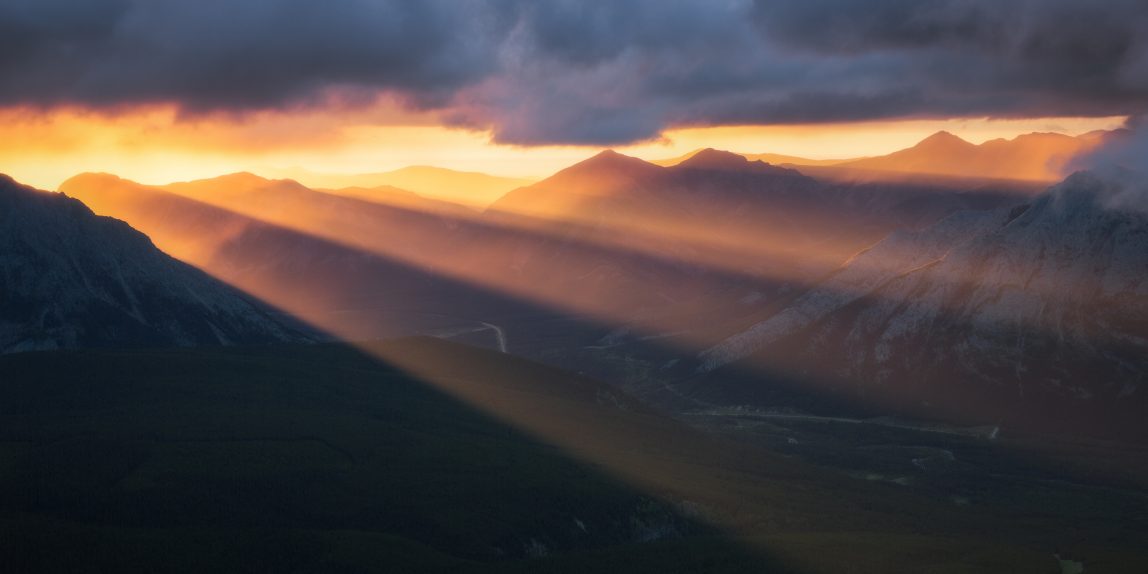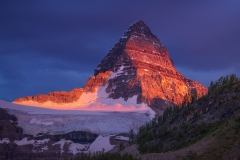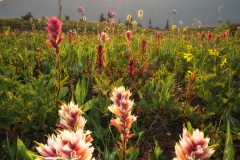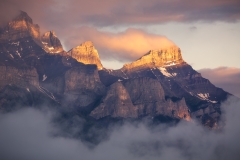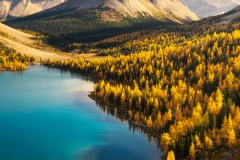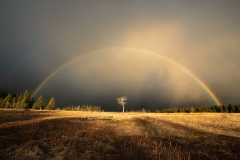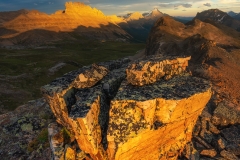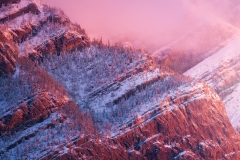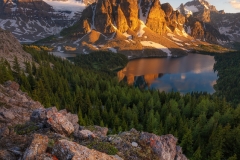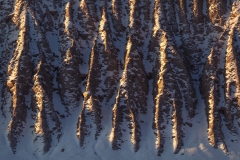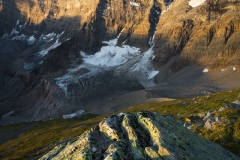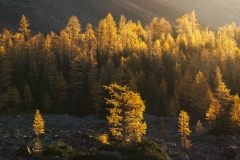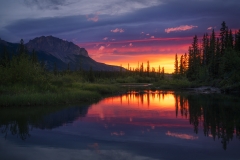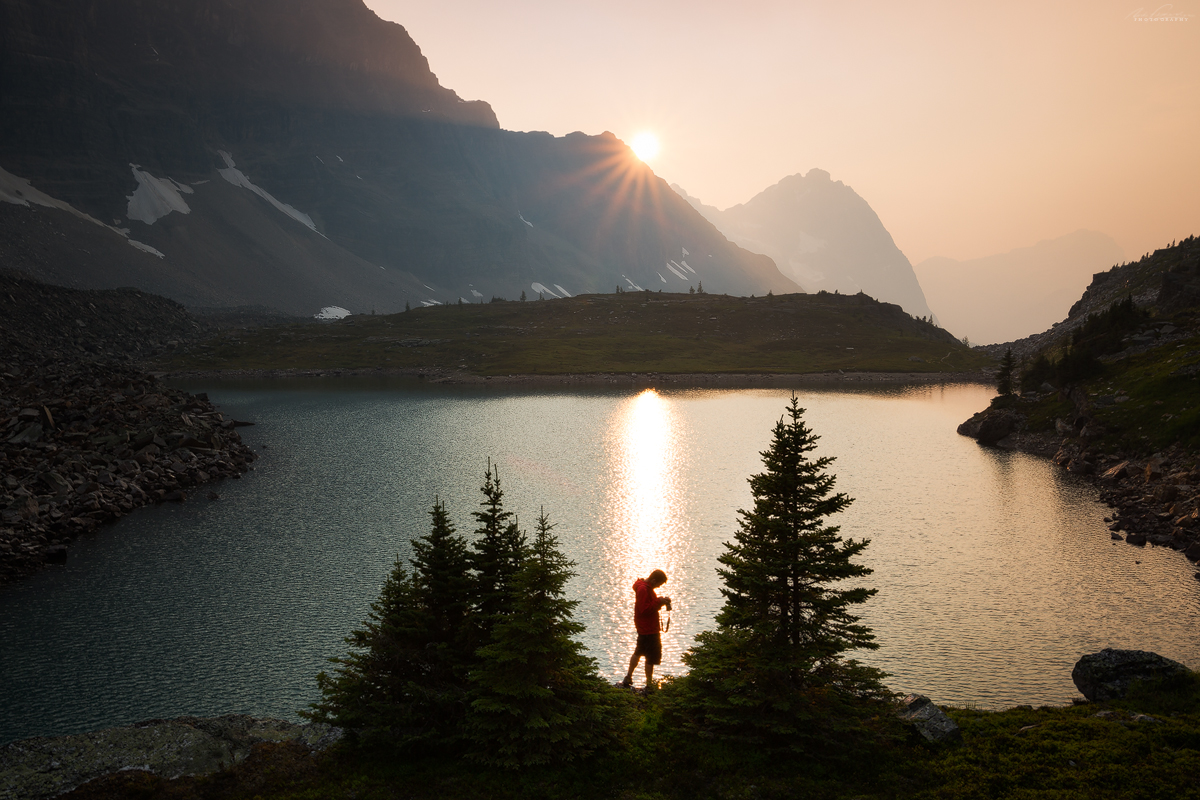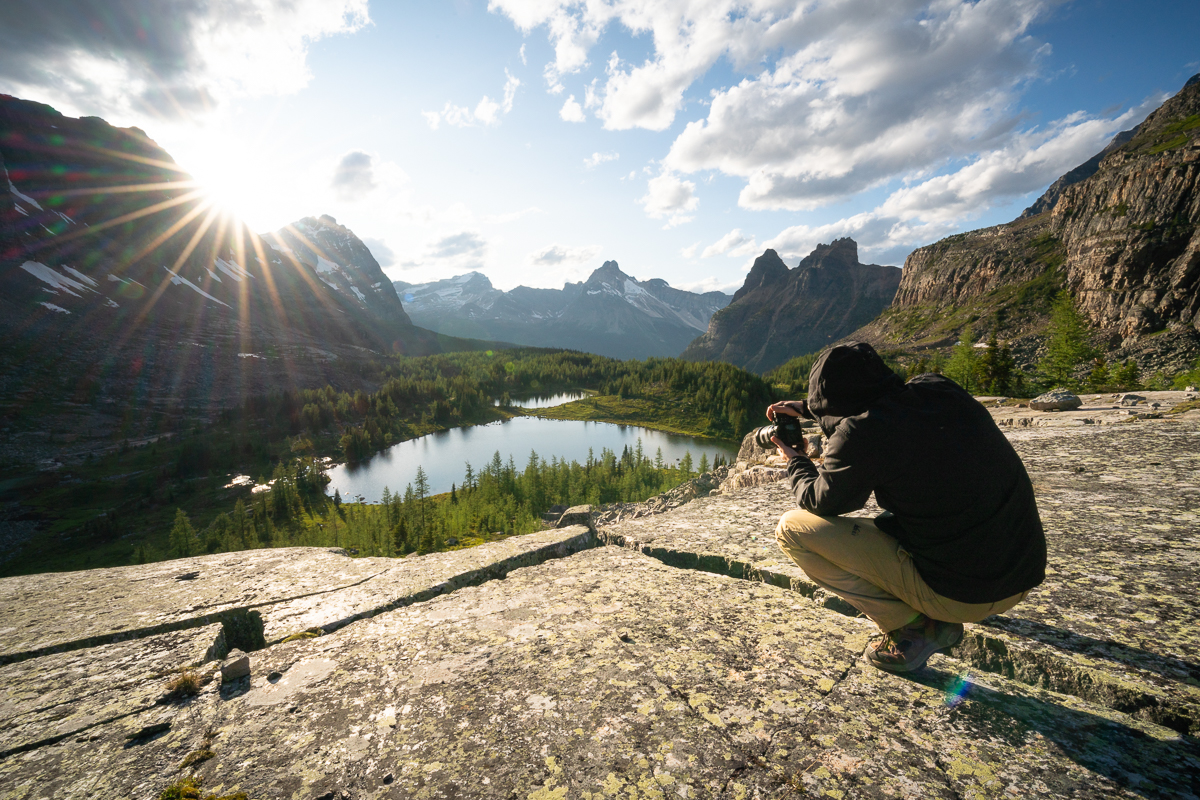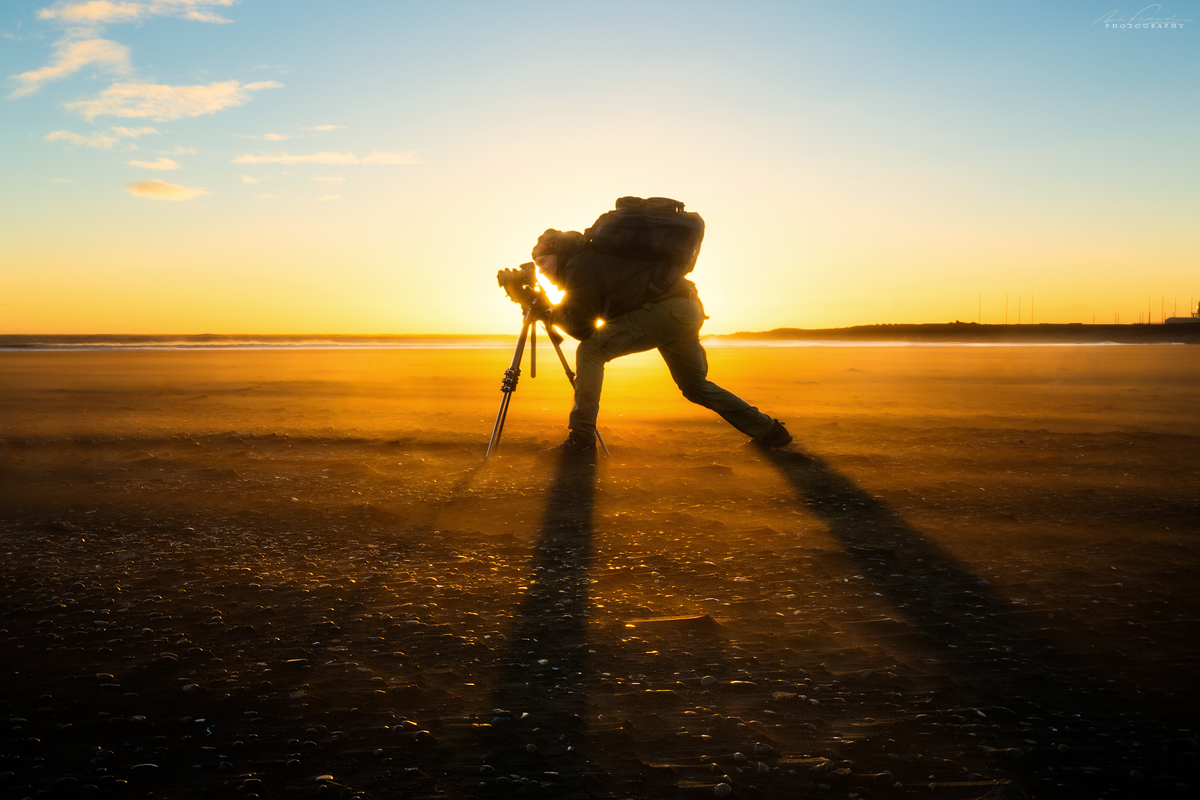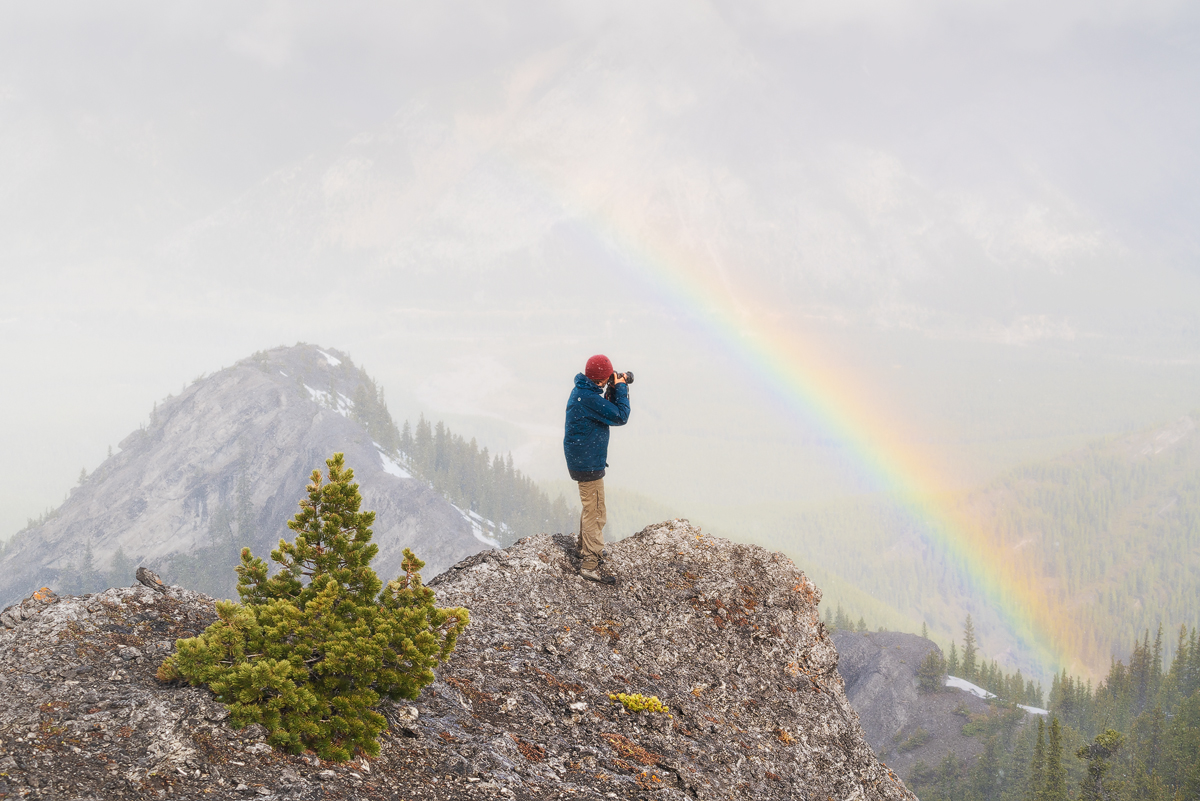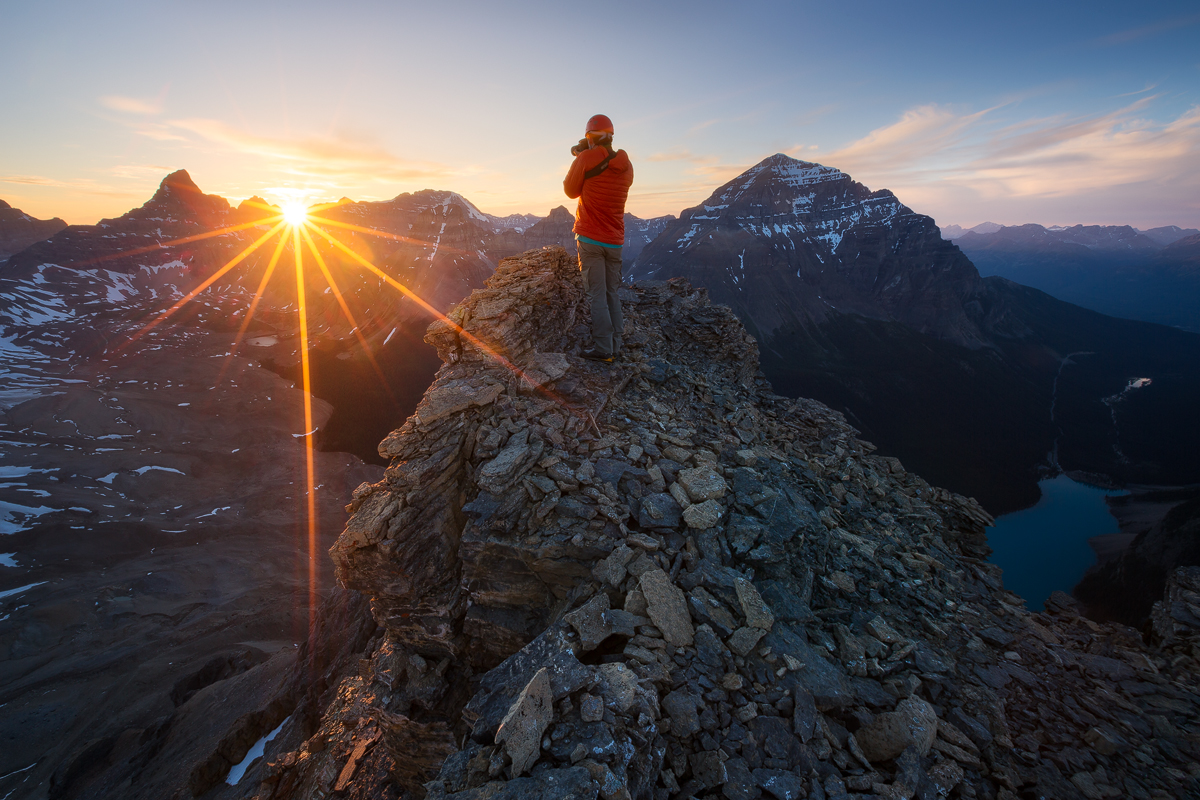I’m always on the lookout for elements of the landscape that evoke emotion in me and colour & light are two closely linked properties that do just that. Light changes our perception of colour by intensifying it when lit and making it appear subdued when in shadow or at night. How much light and which colours are in your image bring about certain emotions and communicate a feeling.
To increase my chances of photographing these elements I focus on the time of day/year and weather a lot. The golden hours especially provide for a great opportunity to see the interaction of light and colour in an elevated state. Think red alpenglow hitting the mountain tops at sunrise. Light travels through more of the earth’s atmosphere at these times showing up in a different colour spectrum than during the middle of the day. Other scenarios I look for revolve around light changeability. This includes photographing during clearing storms, fog and mist, dappled spot lighting, using reflections, and keeping in mind the seasons and what colours and light angles are available during those times. I also look for compositions that will complement the colour & light present in my images. Try to connect elements within your frame and form relationships. This can be difficult when light is fleeting but practice it, grab the safe shot and then work on strengthening your image.
Your style develops naturally from many micro-choices in the field and in post processing, but most obviously through the consistency of application. Consciously learning about the types of light and properties of colour as you go along is important to improvement. My approach is a bit freewheeling in that my best images are often spontaneous, unplanned and from locations that aren’t often visited at the times I go. It’s rare to be in the right place at the right time so focus on getting out on a regular basis to a wide variety of locations, new and old. Achieving impact will depend on how well you can communicate feeling in your images, how rare the light show is, and how harmonious the colour palette is (not necessarily how bold and bright the colours are). It is also closely linked not only to the natural light and colour in front of you, but also in what you bring to the table – a new angle, technique, or ability to interpret and express your uniqueness using both the right and left brain.
If I feel an emotion the camera is often immediately out of the bag and I’m trying to translate what it was I was responding to. Just the act of having the camera in hand, or on the tripod, allows you to be ready for brief moments of light that may only last 30 seconds. It also triggers you to focus more closely on communicating your response to the landscape. For me this means being an active participant in the creative process; getting closer, walking uphill, trying different shutter speeds and changing lenses (for example, using a telephoto lens to isolate or emphasize dramatic light hitting fog in the distance, or the colour in just one small portion of a scene during a sunrise). Rarely is my first shot the best because working with such a variable element in light requires you to be patient and observant. This awareness can have the advantage of fostering deeper connections and more personal work. Check your histogram to make sure you are not clipping the highlights and use bracketing if necessary. Consider the use of filters too which can bring out or amplify colour in the scene but be wary of any associated colour shifts.
In processing an image it is important to keep in mind your viewers will be drawn first to the lightest and darkest parts of the image, as well as the most colourful areas of the scene. Dodging and burning aids in keeping the viewer’s eye where you want it and smooths transitions from areas of light to dark. Experiment to see what brightness level will work best to showcase the light in your image. Be cautious not to saturate everything. Selectively saturating (areas that are lit work well as this occurs naturally) and desaturating areas of an image (areas you want to de-emphasize) can also help to smooth transitions. Learning colour theory will help you make beneficial and informed changes to the image too. My goal is to make subtle adjustments carefully that will support but not overpower the photograph, retaining the natural reality of the scene that moved me at the moment of capture, and to lead the viewer through the scene.
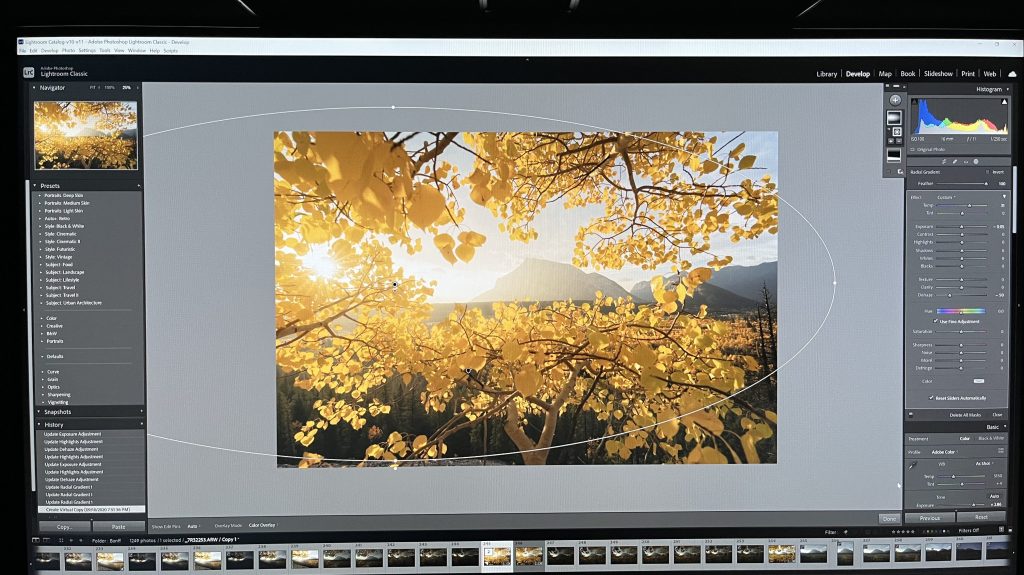
Light is an essential element in photography and it influences our perception of colour. Blending the two harmoniously with your vision is an art!
Sign up to our mailing list to receive the latest information on new photography workshops & tours from Canadian landscape photographer, Nick Fitzhardinge:
